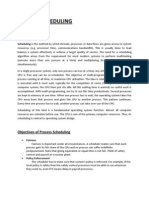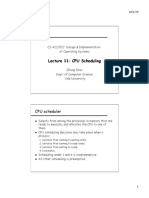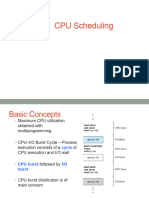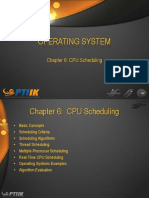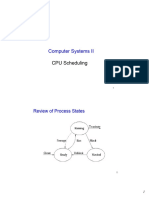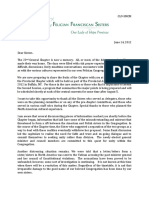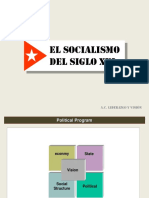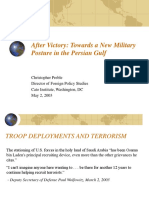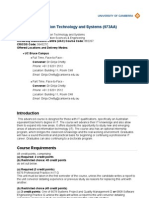0% found this document useful (0 votes)
92 views3 pagesTopic 8: CPU Scheduling: University of Virginia Department of Computer Science Spring 2008
This document discusses CPU scheduling in operating systems. It covers the goals of scheduling which are efficiency, minimizing overhead, minimizing response time, and distributing cycles equitably. Common scheduling algorithms discussed include FIFO, Round Robin, and Shortest Time to Completion First. Later algorithms like Exponential Queue and Fair Share scheduling aim to be adaptive based on a process's usage to better meet the scheduling goals. The best scheduling would predict the future but real algorithms aim to adapt based on past usage.
Uploaded by
Hummels1000Copyright
© © All Rights Reserved
We take content rights seriously. If you suspect this is your content, claim it here.
Available Formats
Download as PDF, TXT or read online on Scribd
0% found this document useful (0 votes)
92 views3 pagesTopic 8: CPU Scheduling: University of Virginia Department of Computer Science Spring 2008
This document discusses CPU scheduling in operating systems. It covers the goals of scheduling which are efficiency, minimizing overhead, minimizing response time, and distributing cycles equitably. Common scheduling algorithms discussed include FIFO, Round Robin, and Shortest Time to Completion First. Later algorithms like Exponential Queue and Fair Share scheduling aim to be adaptive based on a process's usage to better meet the scheduling goals. The best scheduling would predict the future but real algorithms aim to adapt based on past usage.
Uploaded by
Hummels1000Copyright
© © All Rights Reserved
We take content rights seriously. If you suspect this is your content, claim it here.
Available Formats
Download as PDF, TXT or read online on Scribd
/ 3

